
 |
|
|
Milestones of Gagarin's historic mission and approximate geographic locations of key exchanges between the world's first cosmonaut and ground control. Notable are repeated and fruitless attempts by Gagarin to get data on the parameters of his orbit from the Zarya 3 ground station in the Soviet Far East and the apparent unwillingness of rank-and-file controllers to share even the most basic and potentially life-saving information with the cosmonaut until permission from their superiors finally came later during the flight. Also ironic is the fact that at 10:18, a ground controller already addressed Gagarin as "Major," contrary to jokes that Sr. Lieutenant Gagarin was promoted to Captain for the launch and to Major for the landing. |
||||||||||||||||||||
|
|
||||||||||||||||||||
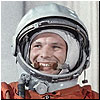 |
The first manned mission of the Vostok was preceded by five years of development work. Out of seven unmanned prototypes of the Vostok spacecraft flown during 1960 and 1961, two spacecraft did not reach orbit due to failures of their launch vehicles and two ships did not complete all their tasks while in orbit. Many veterans of Gagarin's launch later agreed, that in no other time in history would a new spacecraft with such a dismal success rate be certified to carry a human. |
||||||||||||||||||||
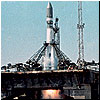 |
Liftoff!
Gagarin's launch vehicle blasted off into the cloudless blue sky almost as scheduled, just a fraction of a second before 09:07 Moscow Time on April 12, 1961. For decades, countless books repeated each other, claiming that Gagarin's launch was flawless. Only by the end of the 20th century, did the truth start to emerge. As it transpired, the main engine of the second stage burned around half a second longer than scheduled. As a result, the rocket exceeded its planned velocity sending the spacecraft far too high. |
||||||||||||||||||||
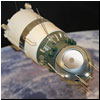 |
Gagarin and his peers on the ground perfectly understood the importance of entering the correct trajectory. The transcripts of radio communications between Gagarin and a ground station in Elizovo in the Kamchatka Peninsula reveal repeated attempts by the cosmonaut to get confirmation on the parameters of his orbit. At one point Gagarin seemingly lost his patience, as he was stonewalled by meaningless replies and questions about his condition by a ground controller, who was either unable or unwilling to provide useful information. |
||||||||||||||||||||
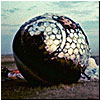 |
On the way back, everything looked good until the conclusion of the 40-second burn of the braking engine, initiated successfully at 10:25 Moscow Time. The spacecraft started spinning about its axis with very high speed. For decades, the very fact, not to mention the cause of the whole incident with the separation of the capsule and its instrument module remained unknown to the general public. Vostok mission at a glance:
|
||||||||||||||||||||
| TECHNOLOGY | |||||||||||||||||||||
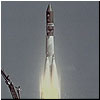 |
Gagarin's rocket launcher
A record-braking size, mass and capabilities of the Vostok spacecraft became possible thanks to the power of its rocket. Originally designated in the industrial documentation as 8K72, the launch vehicle became known to the world as Vostok, following the Soviet tradition of declassifying space launchers under names of their most prominent payloads. |
||||||||||||||||||||
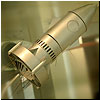 |
Facts and misconceptions Decades after Gagarin's mission, popular media around the world runs erroneous accounts of this historic mission and attributes wrong footage to the flight. Below are a few of the most popular myths and misconceptions in press and TV debunked:
|
||||||||||||||||||||